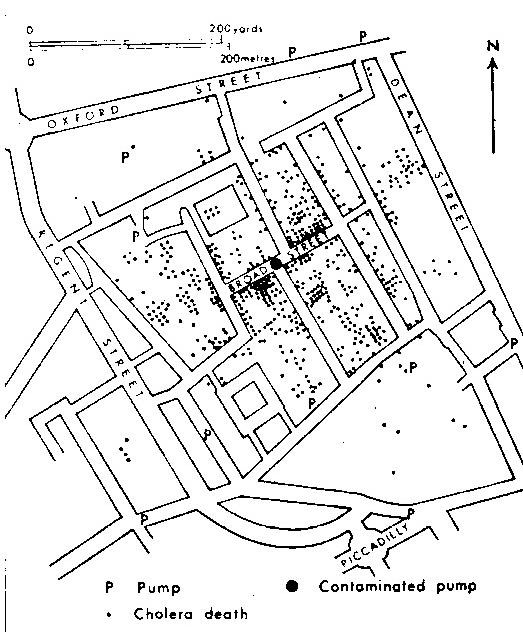
Soho, England 1854
 Cholera is one of the deadliest diseases at the time, wiping out entire households overnight. There was seemingly no rhyme or reason to the attacks, why one household was effective and another was spared. Was one family or person more righteous than another? Or perhaps the citizens of Soho had angered God and called this plight against themselves.
Cholera is one of the deadliest diseases at the time, wiping out entire households overnight. There was seemingly no rhyme or reason to the attacks, why one household was effective and another was spared. Was one family or person more righteous than another? Or perhaps the citizens of Soho had angered God and called this plight against themselves.One man had brilliant idea. He took a map of Soho and marked exactly where each attack of Cholera hit. as he looked at his map for an idea of what might be causing the disease (a novel idea for the time period) he noticed that the water pump on broad street seemed to be the epicenter of the attacks.
 He brought his maps and graphs to the authorities of Soho to show them how to stop the Cholera. The authorities were reluctant, but they were able to see that it was necessary to remove the handel. (albeit once the disease was gone, they put the handel back on the pump... fortunately Cholera doesn't stick around a water supply without a host source)
He brought his maps and graphs to the authorities of Soho to show them how to stop the Cholera. The authorities were reluctant, but they were able to see that it was necessary to remove the handel. (albeit once the disease was gone, they put the handel back on the pump... fortunately Cholera doesn't stick around a water supply without a host source)Images are important to help convey important ideas.
No comments:
Post a Comment